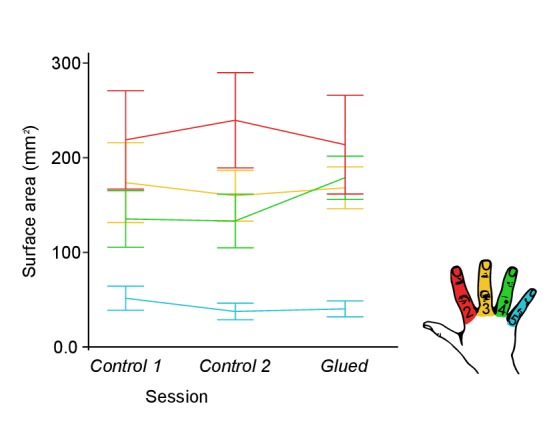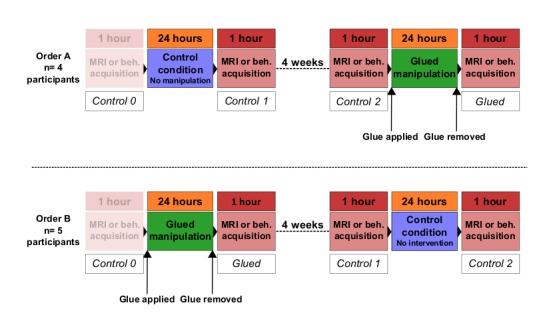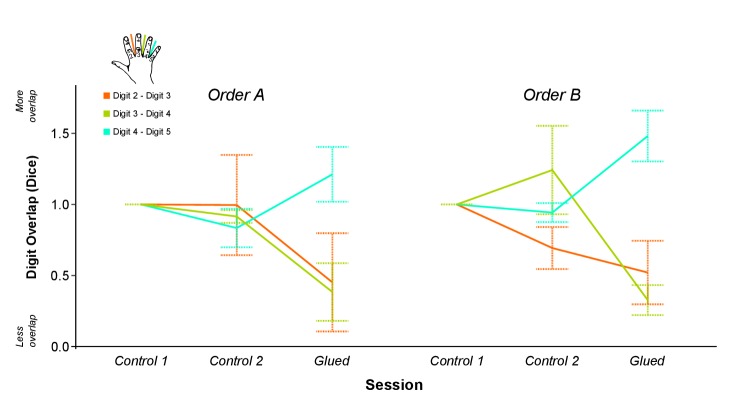Figure 1. Patterns of rapid experience-dependent remapping in human SI.
(A) An example digit map from an individual participant and session, shown on an inflated brain surface (bottom right), and a zoomed panel (Threshold FDR α = 0.01); sulci and gyri are shown in dark and light grey, respectively. The region of interest used for cortical overlap analysis is indicated by a white line on the inflated brain. (B) Cortical overlap between pairs of digit representations showed a significant reduction between D3 and D4, and a significant increase between D4 and D5 after the gluing manipulation compared with the two control conditions. *p<0.05 **p<0.005 Sidak corrected. Data in (B) are presented normalised to control one session; all statistics were performed on raw un-normalised data. Dice: Dice coefficient; Error bars represent standard error of mean.
DOI: http://dx.doi.org/10.7554/eLife.17280.003
Figure 1—figure supplement 1. Cortical surface area of individual digit representations used in calculation of DICE coefficient at each time point.

Figure 1—figure supplement 2. Overview of the fMRI experiment and the behavioural experiment study design.



